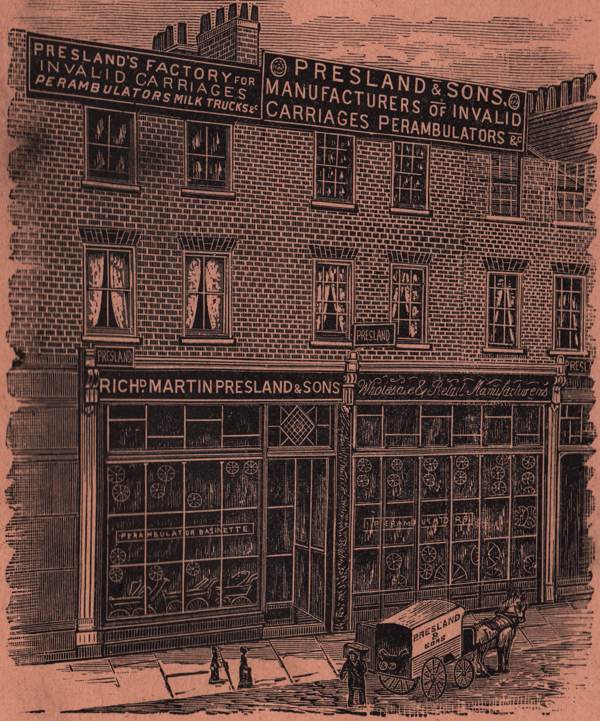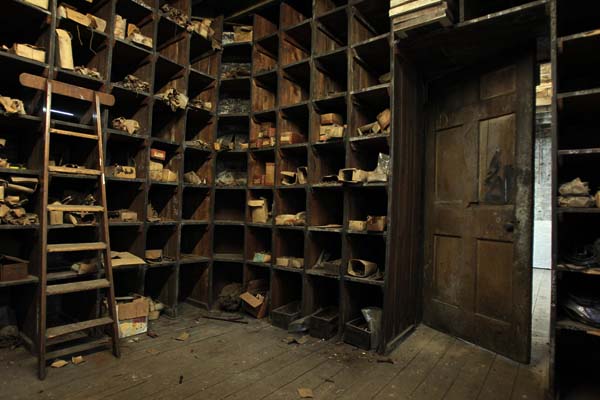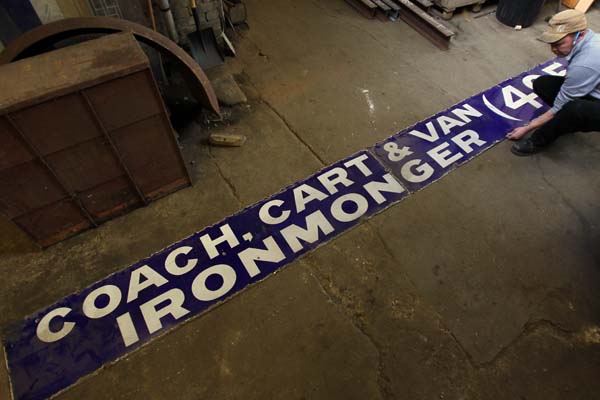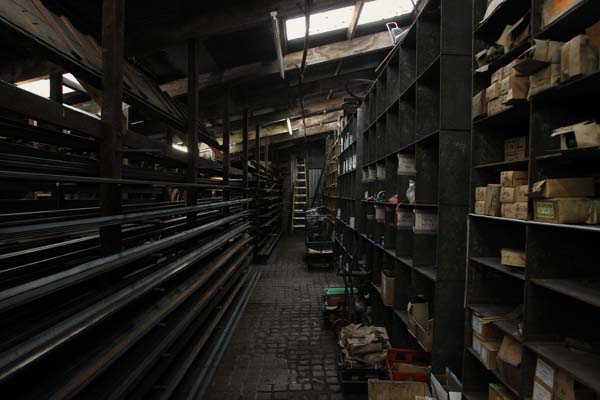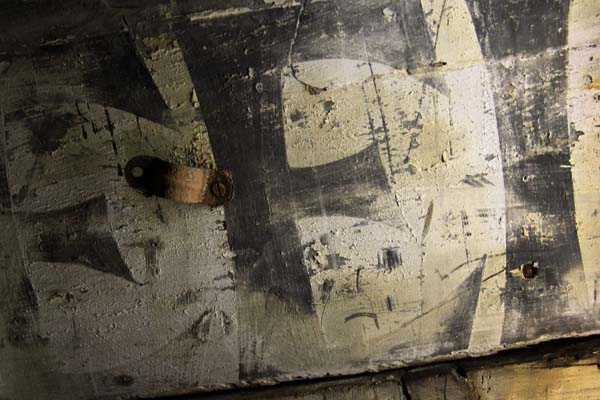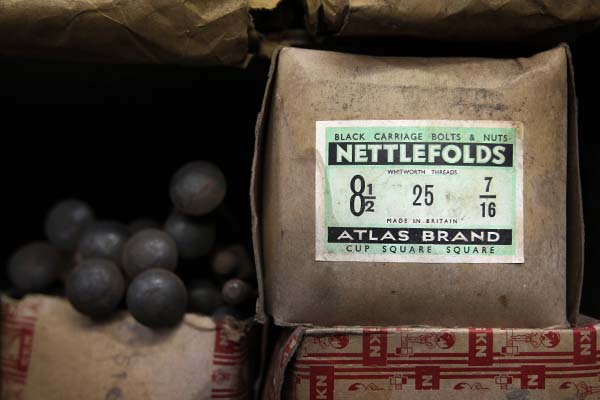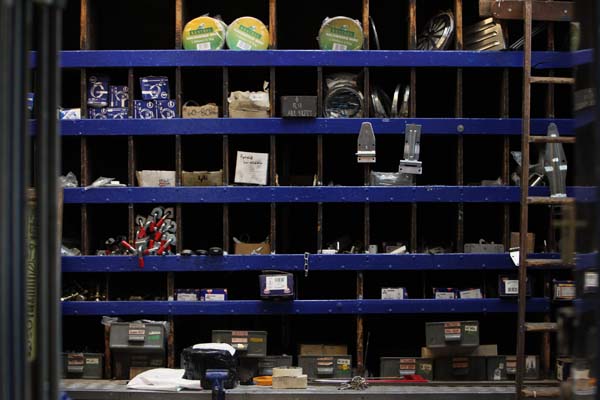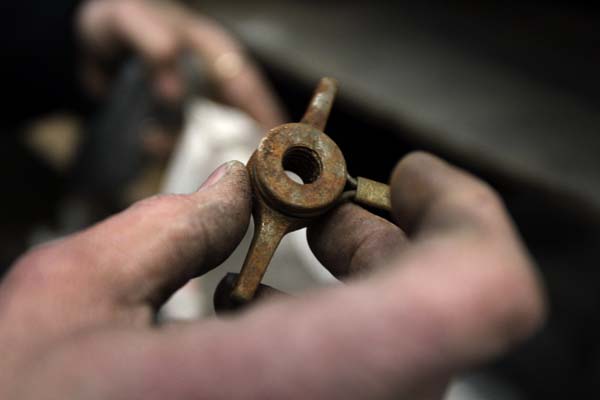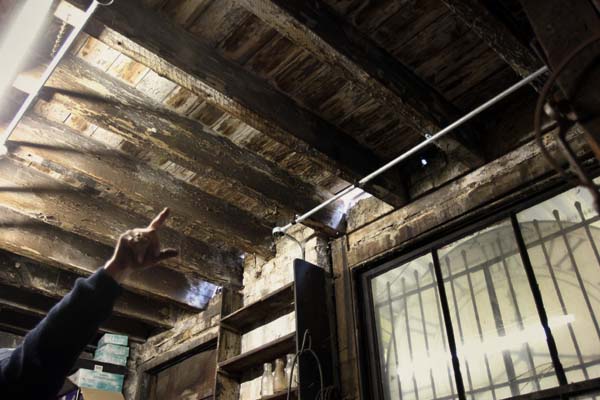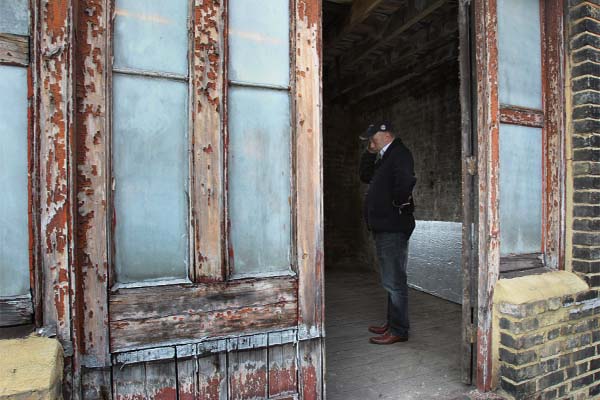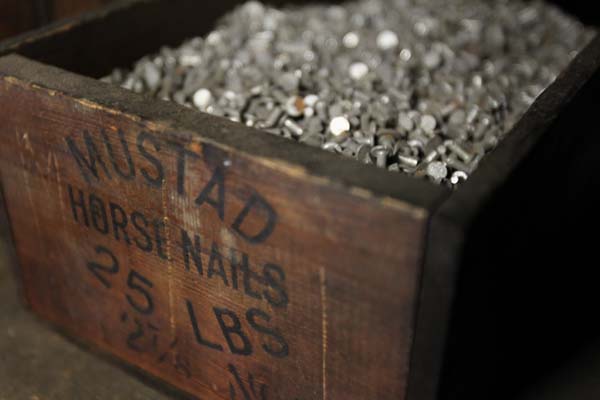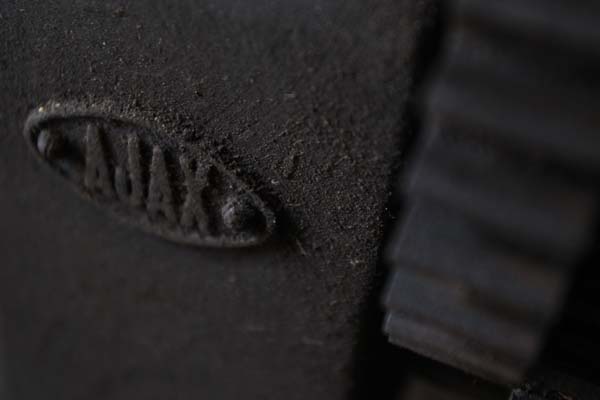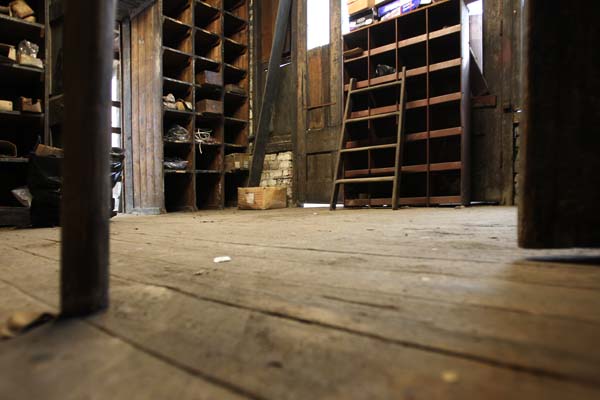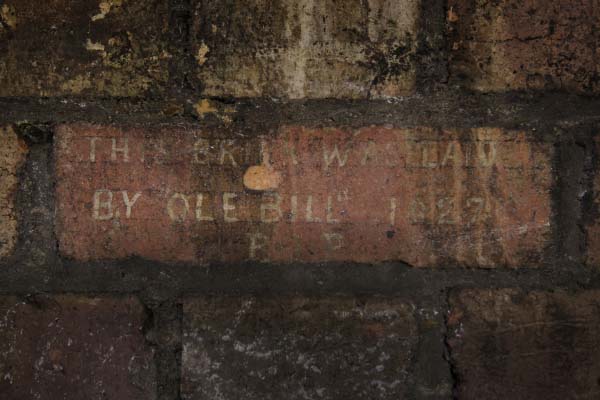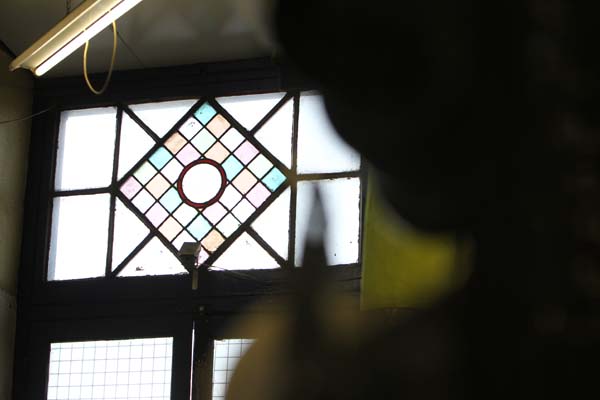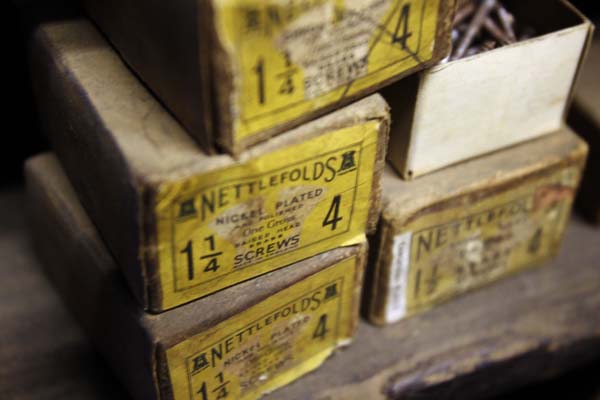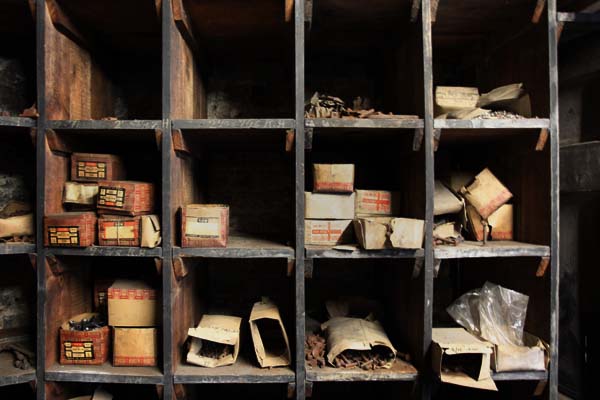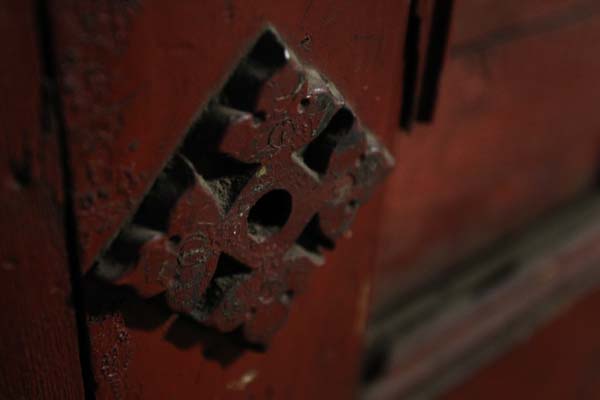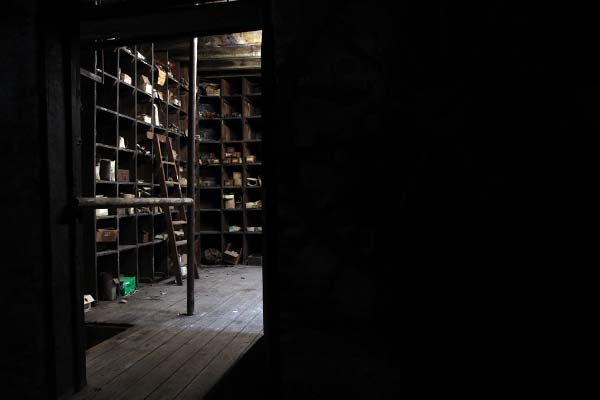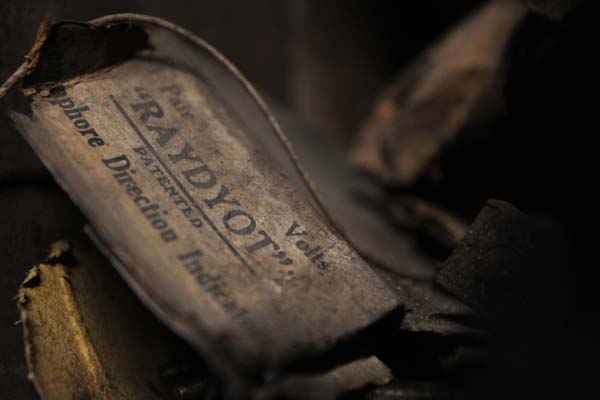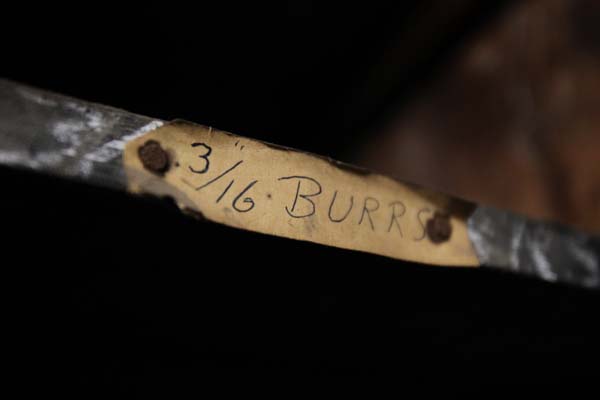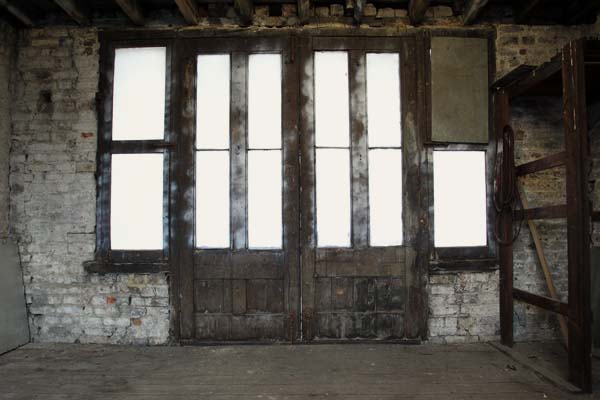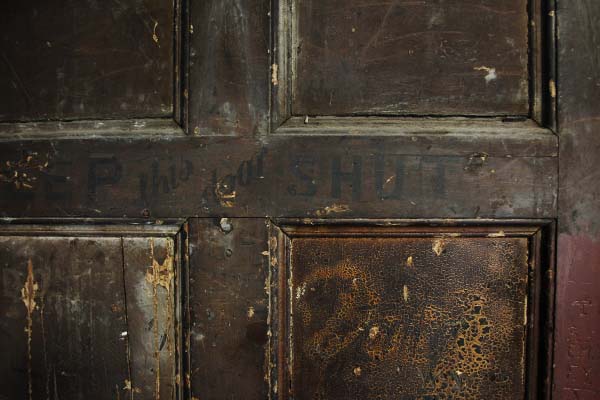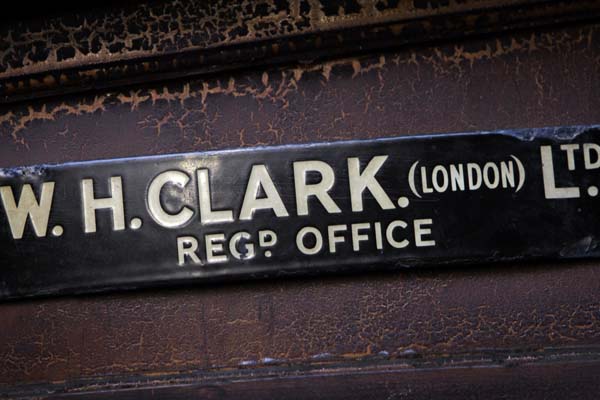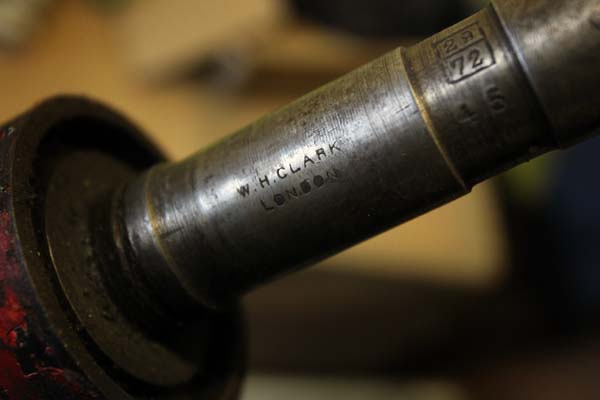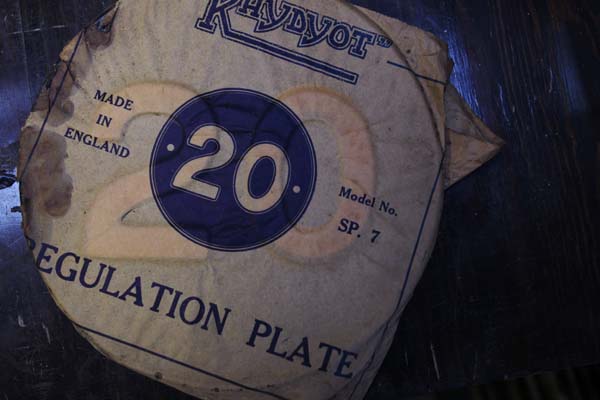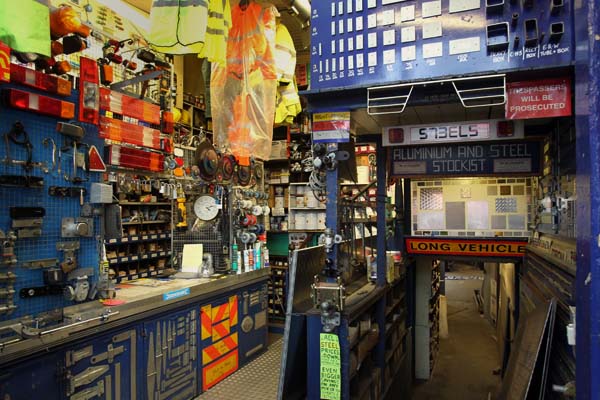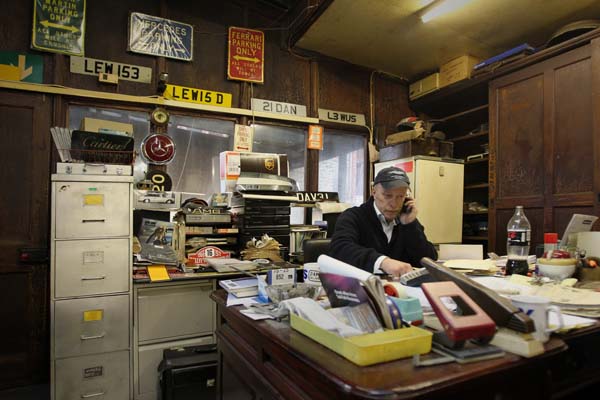The frontage at 493-495 Hackney Rd is unchanged to this day.
The factory at the rear of the shop remains just as in this engraving.
London’s oldest ironmongers opened for business in 1797 as Presland & Sons, became W.H. Clarke in the eighteen-nineties and still trades from the same location, over two hundred years later, as Daniel Lewis & Son Ltd. Operating at first from a wooden shack built around 1760, they constructed their own purpose-built shop and factory at the beginning of the nineteenth century, which suited their needs so perfectly that – in an astonishing and rare survival – it stands almost unaltered today.
This is architecture of such a utilitarian elegance and lack of ostentation that it does not draw attention to itself. I had no idea there was a complete Georgian shopfront in the Hackney Rd until David Lewis, the proprietor, pointed it out to me and I compared it to the illustration above. Amazingly, even the decorative coloured-glass lozenge above the door is there today exactly as in the engraving.
When contributing photographer Simon Mooney & I went along to explore, we were amazed to discover a unique complex of buildings that carries two centuries of history of industry in the East End, with many original items of nineteenth century hardware still in stock.
“We were here before the canal, the railway and the docks,” David Lewis informed us proudly,“When the Prince Regent banned horses from being stabled in the city, this area became the centre of the carriage and coach-building industry.” An ironmonger with a lyrical tendency, David will remind you that Cambridge Heath Rd was once a heath, that Bishop Bonnar once built his mansion on this land before the Reformation and that an oval duckpond once existed where the Oval industrial estate stands today behind his premises – all in introduction to the wonders of his personal domain which has been here longer than anything else around.
You enter from the street into the double-height shop, glazed with floor-to-ceiling windows and lined to the roof with meticulously-labelled wooden pigeon-holes, built-in as part of the original architecture. A winding stair leads you into the private offices and you discover beautiful bow-fronted rooms, distinguishing the rear of the terrace that extends two storeys above, offering ample staff quarters. On one side, is an eccentric, suspended office extension built in 1927 and constructed with panelling and paint supplied by the Great Western Railway, who were customers. This eyrie serves as David’s private den, where he sits smoking at a vast nineteenth century desk surrounded by his collection of custom number plates, all spelling Lewis in different configurations of numbers and letters.
A ramp down from the shop leads to the rear, past cellars lined with pigeon-holes constructed of the flexo-metal plywood that was the source of the company’s wealth for decades. At the back, is a long factory building with three forges for manufacturing ironwork where you can feel the presence of many people in the richness of patina created by all the those who worked here through the last two centuries. Occasionally, David paused and, in delight, pulled out boxes full of brass fixtures and iron bolts necessary for nineteenth century carriage building. Upstairs, he showed us an arcane machine for attaching metal rims to wagon wheels, essential when the streets of London went from dirt to cobbles in the nineteenth century.
To the left of the factory, stands a long cobbled shed where the carriages came in for repair, and beneath a slab flows a stream and there are stones of the Roman road that ran through here. In the layers of gloss paint and the accumulation of old things, in the signs and the ancient graffiti, in the all the original fixtures and fittings, these wonderful buildings speak eloquently of their industrial past. Yet for David they contain his family history too.
“My dad was Lewis Daniel John Lewis, he was Lewis Lewis and his father was also Lewis Lewis, and he wanted me to be Lewis Lewis too but my mum wasn’t having it, so I am David Richard Lewis. I first came here with my dad as a nipper, when I was four or five years old, on Saturday mornings while he did the books. I played with all the nuts and bolts, and I was curious to see what was in all the boxes. And I used to run up and down the ramp, I was fascinated by it. I’ve learnt that it’s there because the Hackney Rd follows a natural ridge and there were once mushroom fields on either side at a lower level.
My dad started at W.H.Clarke in 1948 as a young boy of fifteen, he had already studied book-keeping and he was taken on as an office junior. At eight years old, it was discovered he was diabetic when he was found lying on the pavement here in Hackney Rd, where my grandparents had a grocer and dairy. He always had to have insulin injections after that. He was tall, six foot one, and a little skinny because he didn’t have much of an appetite – except for chocolate biscuits which he shouldn’t have had, but he enjoyed them with a cup of tea.
He learnt the trade and he worked his way up to office manager. Then, in 1970, one of the partners retired and the other suffered a tragedy and turned to drink and became unsteady. So my grandfather bought the business for my father in 1971 and he took over the directorship of the company. He already knew how to run the business and he set out to build the company up with new customers – he got St Paul’s Cathedral as a customer and we still supply them.
Our biggest selling product was flexo-metal plywood, we had the exclusive distribution contract and we supplied it to the coach-building industry across the entire South-East of England for the construction of buses, coaches, lorries and trucks. They used to pull up outside with vehicles that had no body, no cab – just the engine and a chassis with the driver sitting on a tin bucket. They bought flexo-metal plywood to build the body and we could supply them with a windscreen, lights, chains for tailboards, everything – all the components. Any time I see a van in a fifties or sixties film, it is one of ours. At that time, we employed eighteen people.
I joined in 1992. I went to college and did business studies and I wanted to prove to my dad that I could do it on my own. I became a trademark lawyer, working for the Trademarks Consortium in Pall Mall that protected the trademarking for brands like Cadburys, Bass, Tesco and Schweppes. I’ve always been fascinated by labels because of looking at all the different trademarks on the boxes of screws here and I collect custom number plates.
When the business that supplied flexo-metal plywood went to the wall, my father employed Peter Sandrock who used to run it. He was approached by many global companies because he was a genius mathematician who could do figures in his head, but he wanted to work for my dad because they always got on well and would help each other. He worked for my dad for ten years until 1992 and that’s when I came in, just after I got married.
I started as an office junior like my dad but I found it boring because I had already done other things. So I said, ‘Can I go down and serve behind the counter?’ but he said, ‘You haven’t got the build to carry steel.’ I surprised him by developing muscles and soon I could do it with ease – I’ve got broad shoulders now when I didn’t use to have.
When I was made a director, all the carriage-building trade was moving up north, so I refocused the company towards aluminium and steel supply to metal fabricators, architects and sculptors. But in recent years, due to installation of cctv cameras and the council issuing £130 fines to our customers while picking up orders, our trade has dropped by fifty per cent. We have two to three hundred customers a day and I reckon the council have earned £63,000 a year in fines out of them and so, in a few months, after two centuries of business in this location, we are going to move from here .
It was in 2002, I changed the name of the company from W.H.Clarke, who had been a Mayor of Hackney in the nineteenth century, to Daniel Lewis & Son Ltd, in memory of my father. I am the son.”
Nineteenth century storage filled with nineteenth century carriage fittings in the factory.
The enamel sign that was taken down from the frontage in 2002.
This is the cobbled workshop where the carriages were wheeled in for repair.
The ceiling in the storeroom is lined with timber painted with nineteenth century sign-writing.
Carriage bolts are still in stock.
The wooden pigeon-holes stretch to the ceiling in the double-height shop and are contemporary with the building.
Daniel Lewis & Son Ltd has collets in stock – pins used for attaching cartwheels to the shaft.
David in the factory building.
Bert left to in 1962 Good By
Machine for applying metal rims to cartwheels in the factory.
A threading machine in the factory.
This brick was laid by “Ole Bill” 1927 RIP
View towards the bonded warehouse of the Chandlers & Wiltshire Brewery – burnt out in World War II, it is London’s last bombsite and a memorial to the Blitz in the East End.
A display of Nettlefolds screws wired to a board in a gilt-crested frame that was displayed at the Great Exhibition of 1851.
The glass over the entrance is part of the original design of the building, dating from the early nineteenth century
Packaging for hinged metal indicator lights, still in stock.
Keep this door shut.
The crackle on the office wall is authentic, achieved by age, not a paint effect.
The name of W.H.Clark impressed upon a carriage shaft manufactured in the forge.
Before 1920, no road vehicle was permitted to travel at more than 20mph and had a plate attached to this effect – Daniel Lewis & Son Ltd has them in stock today.
The Ascot water heater in David’s office is fully-functional.
The shop with the ramp going down towards the factory at the back.
The steps from the shop going up to the office.
David Lewis at his desk in the rear office lined with panelling and paint supplied by the Great Western Railway.
Photographs copyright © Simon Mooney
Daniel Lewis & Son Ltd, 493-495 Hackney Rd, E2 9ED
You may like to read about these other East End hardware shops
